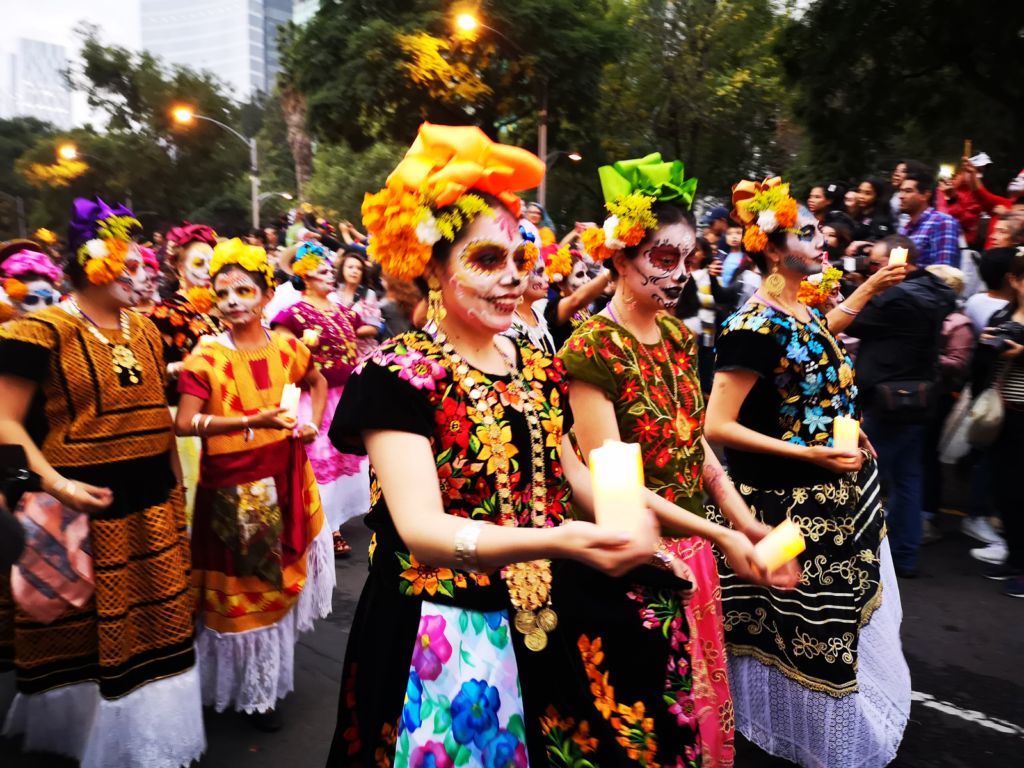San Miguel de Allende, with its undeniable charm, immediately befriends you.

The locals are open and warm, the entire city is walkable, and everyone talks to each other. The cobblestone streets lead you through spectacular, well-preserved Spanish and Colonial architecture, where even the taxi drivers stop to wave you on as you cross the street.
Located 170 miles NW of Mexico City in the central highlands, the city is not convenient to access from most US cities; however, the experience is well worth the trek. Recently listed as a UNESCO World Heritage Site, the city is almost 500 years old. It’s a very international city, yet still incredibly rich in traditional Mexican culture. The streets are clean, the food is fresh, and the city is full of life. It’s no wonder why so many people fall in love with San Miguel de Allende!
My mother, one of the many Americans allured by the city’s charisma, rented an apartment for a few months in the center of town. As soon as I realized she would be there for the Dia de los Muertos celebration, I decided I had to experience it. I booked the trip with my two children, ages 8 and 3, and one of my dearest friends.
Dia de los Muertos, stemming from the Aztecs 3000 years ago and merged with Catholicism, is a Mexican holiday celebrated on November 1-2 with rituals and festivities to honor deceased loved ones. It is believed that the gates of heaven are opened at midnight on October 31, allowing the spirits of all deceased children to reunite with their families for 24 hours. On November 2, the spirits of the adults join in to enjoy the festivities that the entire community has prepared for them. As morbid as that may seem to an outsider, Mexican people see it as part of the life-death-rebirth continuum. Death is a natural part of life that should not be shunned or forgotten; it should be celebrated and remembered. Beautiful altars are made for loved ones, decorated with offerings such as candles, sweet sugar skulls, marigolds, and the favorite possessions of the honored persons. La Catrina, the star of the holiday, is an elegantly well-dressed skeleton woman who symbolizes Mexicans’ willingness to find humor in death. Her attire, representative of wealthy European dress, demonstrates the neutrality of death, as we are all the same in the end. She is depicted nearly everywhere you look, and I’m certain you will fall head over heels for her, just as we did.
We arrived in San Miguel the evening of Saturday, October 29th, and we could already feel the vibrance and energy of the festivities. We saw our first group of painted Catrina faces sitting at the table next to us at dinner. We quickly learned that the celebration seems to begin the weekend prior and continues until the final day on November 2nd.

We spent our first full day exploring the city. We already saw beautiful altars scattered throughout the city and wandering costumed Catrinas walking the cobblestone streets. We knew that we wanted to dress up, but we were unsure which day would be best. We asked around and got many different answers. By the end of the trip, we learned that ANY day is a great day to dress up! If it were up to my eight-year-old daughter, EVERY day would be the best day to dress up!
On November 1st, El Jardin comes alive with the most elaborate of the altars, adorned with fresh flowers, brightly colored flags, intricate hand-made murals, and beautifully painted Catrinas. In the evening, the Catrina parade strolls through the streets. Starting at the Rosewood hotel, anyone painted may join. It ends at El Jardin, where the party continues with Mariachi bands, elaborate costumes, Moligangas (giant paper mache puppets), fireworks, and dance/music performances by indigenous groups. This family-oriented event can truly be enjoyed and appreciated by all ages.
On November 2nd, the entire community heads to the cemetery. The graves are decorated with flowers, candies, flags, photos, and pan de los muertos. We started our day in El Jardin, where we bought flower crowns and had our faces painted. Then we headed to the cemetery. The celebration continues into the evening for the final day of Dia de los Muertos. The following day, the remnants of the celebration begin to disappear as the city returns to normal… at least until next year.
